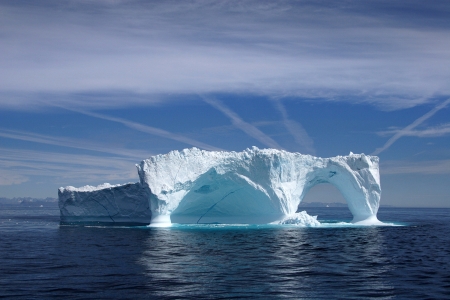
Don’t let your iceberg sink your ship.
Copyright: lisastrachan / 123RF Stock Photo
In business, many people think of their organisation as being unsinkable like the Titanic. It’s been built up over the years, is profitable and successful. What could go wrong?
You’re all familiar with what happened when the supposedly unsinkable Titanic collided with an iceberg, and the tragedy that followed. In the decades that have followed, many theories have been put forward about what caused the vessel to actually sink. At first, many blamed the Captain for the speed at which he sailed across the iceberg-packed waters.
Others thought it was the steel the ship was made out of that was at fault. Scientists found it was very brittle after they hit bits brought up from the bottom of the ocean and they shattered when hit with a hammer. This theory has now been debunked as bigger parts from the hull fared much better in the same experiment.
It’s now widely accepted it was actually the iceberg that scuppered the Titanic. The ship’s huge bulk meant it wasn’t very nimble and couldn’t get out of the way of big objects, like icebergs. And the only way of spotting big objects was by lookouts – another potential flaw – especially as it was dark. So when the ship eventually stuck the fatal iceberg, big holes were pierced in its hull and it filled with water and sank pretty quickly.
It also appears the design of the liner was it fault. It was constructed with huge interior compartments that meant it should’ve been able to stay afloat even when many of these compartments were flooded. Much longer than any ship of its size in fact. However, it appears that when six compartments filled up with water (in around two hours) it was game over.
Interestingly, it can often be your own iceberg that can sink your own organisation.
The thing about icebergs is you can only see about 20% of them poking out of the water. It’s the same with people. We let others see about 20% of us, which is usually the way we behave and act through words, body language and gestures.
The 80% under the surface is what makes us behave and act in the way we do, and includes things like beliefs, values, biases, prejudices, experiences, fears, and feelings. This other 80% of the iceberg we can’t see is what can do the damage if you’re not careful. They affect what you say and do without you realising it.
To put it simply, the bits above the water are conscious actions and decisions, while the more submerged ones are unconscious thoughts. These go right back to your upbringing and are developed further throughout your life, and are a mixture of both positive and negative.
They’ll make you think about whether people who are important to you, like your family or someone you respect, would approve of what you’re doing, or bring up anxieties and unfounded fears of being exposed as a failure.
You’ll do all of these without thinking about why you react in certain way or behave in the way you do. They just happen naturally because of all the factors that have shaped who you are.
You need to understand how those characteristics hidden deep under the water determine how you do things. It might mean making a difference choice every now and then and changing your behaviour in different situations.
The key is not to let the 80% chunk of your iceberg cloud your vision so it doesn’t become as a hazard lying in wait for your organisation to crash into in the water.
Don’t let your own iceberg sink your titanic.







